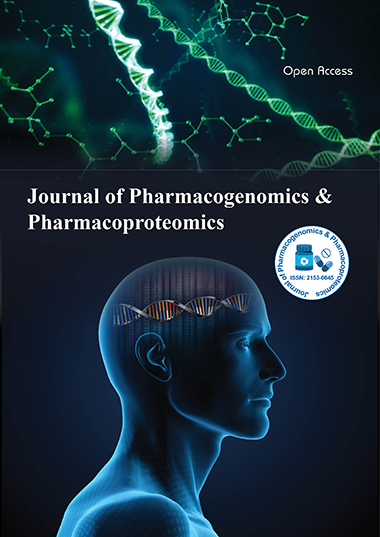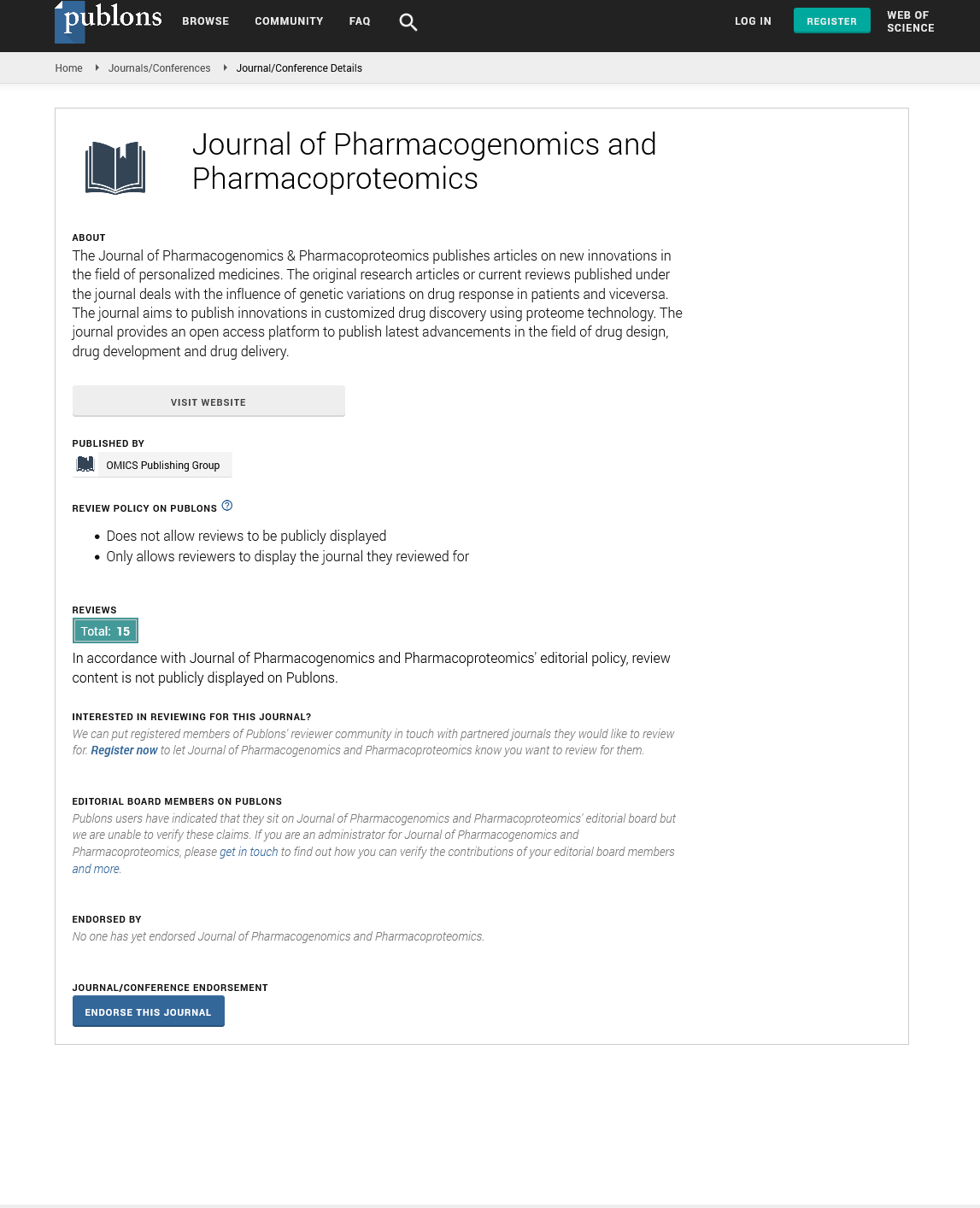Indexed In
- Open J Gate
- Genamics JournalSeek
- Academic Keys
- JournalTOCs
- ResearchBible
- Electronic Journals Library
- RefSeek
- Hamdard University
- EBSCO A-Z
- OCLC- WorldCat
- Proquest Summons
- SWB online catalog
- Virtual Library of Biology (vifabio)
- Publons
- MIAR
- Euro Pub
- Google Scholar
Useful Links
Share This Page
Journal Flyer

Open Access Journals
- Agri and Aquaculture
- Biochemistry
- Bioinformatics & Systems Biology
- Business & Management
- Chemistry
- Clinical Sciences
- Engineering
- Food & Nutrition
- General Science
- Genetics & Molecular Biology
- Immunology & Microbiology
- Medical Sciences
- Neuroscience & Psychology
- Nursing & Health Care
- Pharmaceutical Sciences
Perspective - (2022) Volume 13, Issue 3
Novel Drug Delivery System (NDDS) of Metformin
Grazia Marsa*Received: 02-May-2022, Manuscript No. JPP-22-16785; Editor assigned: 06-May-2022, Pre QC No. JPP-22-16785(PQ); Reviewed: 20-May-2022, QC No. JPP-22-16785; Revised: 27-May-2022, Manuscript No. JPP-22-16785(R); Published: 06-Jun-2022, DOI: 10.35248/2153-0645.22.13.012
Description
Metformin hydrochloride is a biguanide derivative that is prescribed to roughly 120 million individuals worldwide for the treatment of type 2 diabetes. The active ingredient in the French Lilac is biguanides (Galega officinalis). They were discovered in the 1920s and began to be employed as medicinal agents in the 1950s. Metformin was approved as an antihyperglycemic medicine in the United Kingdom, Canada, and the United States in 1958, 1972, and 1995, respectively. The European Association for the Study of Diabetes and the American Diabetes Association both suggest metformin as a first-line treatment for type 2 diabetes.
Metformin is an antihyperglycemic drug that works by lowering hepatic glucose production. Furthermore, it enhances insulin-mediated glucose metabolism in peripheral organs (such as the liver and muscle), inhibits gluconeogenesis in the small intestine, and lowers plasma free fatty acid concentrations, all of which reduce gluconeogenesis substrate availability. As a result, it lowers blood glucose levels in those with type 2 diabetes without causing hypoglycemia. Metformin has recently been discovered to be useful in the treatment of a variety of malignancies, including prostate, colon, and breast cancer.
Metformin is absorbed mostly from the upper small intestine after oral treatment and has a limited bioavailability. Metformin has an absolute bioavailability of 50%-60%. The use of appropriate drug delivery technologies, such as bioadhesive and gastroretentive drug delivery systems, can help to improve its partial absorption.
It has a biological half-life (t1/2) of 0.9-2.6 hours. For a successful treatment, high dosages of metformin (500 mg two or three times daily, or 850 mg once or twice daily with or after meals) must be used repeatedly. As a result, patient compliance suffers and/or adverse reactions such as diarrhea, nausea, anorexia, vomiting, weight loss, and taste disturbance become more common. Furthermore, biguanides have been linked to lactic acidosis, which can be lethal. Metformin may benefit from the development of innovative formulation strategies to improve absorption, reduce dose frequency, and lessen gastrointestinal side effects and toxicity. These systems may also aid in the effective administration of metformin in cancer treatment.
Particulate medication delivery technologies (such as polymeric micro particles and nanoparticles) provide various benefits over traditional dosage forms. Higher local drug concentrations, less variance in gastrointestinal transit durations, low individual variability, low danger of dosage dumping, fewer side effects, the ability to use alternative modes of administration (e.g., oral, inhalation, parenteral), and hydrophilic and hydrophobic drug loading are all examples. Nano particulate drug delivery systems in particular are unique among particulate dosage forms and have been employed as a promising method for cancer treatment over the past two decades.
Following oral administration of metformin hydrochloride, absorption is sluggish and partial. Metformin has a 50%-60% absolute bioavailability after a single 500 mg dose. When taken with food, its bioavailability is lowered. The maximal plasma concentration (1.0-1.6 mg/L) was obtained within 3 hours after oral administration of an immediate release metformin hydrochloride tablet (500 mg). The Maximum Plasma Concentration (Cmax) was observed to be higher in type 2 diabetic patients with good renal function (2.09 mg/L) than in healthy participants (1.32 mg/L) after oral administration of a 1000 mg dosage of immediate release metformin tablet twice daily. On the other hand, total clearance was nearly 30% lower in diabetic patients compared to healthy subjects (881 mL/min against 1265 mL/min).
The researchers compared the pharmacokinetic features of metformin-extended release tablets (750 mg) in fasting and fed states (after a high-fat breakfast) to those of immediate release tablets (1000 mg) in fasting settings. Although bioavailability and duration to attain Cmax were higher in the fed state than in the fasted state for extended release tablets, there was no significant difference in Cmax (794 ng/mL against 832 ng/mL) or half-life (t1/2: 3.66 h vs. 3.80 h) values between fed and fasting circumstances. Except for half-life (t1/2: 3.39 h), all pharmacokinetic parameters determined for immediate release tablets (Cmax: 1956 ng/mL, tmax: 2.58 h, AUC0: 12 884 ngh/ mL) were significantly different from the corresponding values (Cmax: 832 ng/mL, tmax: 4.3 h, AUC0: 6167 ngh/mL) obtained for the extended release formulation in fasting conditions. In healthy Indian volunteers, meals enhanced the bioavailability of metformin hydrochloride (1000 mg) SR tablets.
Metformin is the most often given oral antihyperglycemic drug for type 2 diabetes treatment. However, due to the shorter biological half-life, it has a delayed and incomplete absorption after oral administration, and frequent applications of high dosages of metformin (as rapid release formulations) are required for an effective treatment. Furthermore, recent research has shown that metformin has antitumorigenic properties in various cancer types, including breast and colon tumors. Metformin is an excellent contender for cancer treatment because of its therapeutic safety, relatively inexpensive, and well-understood pharmacodynamic profile.
Drug delivery systems are quite useful for overcoming the challenges that arise with traditional dose forms. As a result, developing drug delivery systems (e.g. microparticles, nanoparticles) strategies for metformin could be beneficial not only for improving its bioavailability, reducing dosing frequency, reducing gastrointestinal adverse reactions and toxic effects, but also for the effective use of metformin in cancer treatment.
Citation: Marsa G (2022) Novel Drug Delivery System (NDDS) of Metformin. J Pharmacogenom Pharmacoproteomics. 13:012.
Copyright: © 2022 Marsa G. This is an open-access article distributed under the terms of the Creative Commons Attribution License, which permits unrestricted use, distribution, and reproduction in any medium, provided the original author and source are credited.

